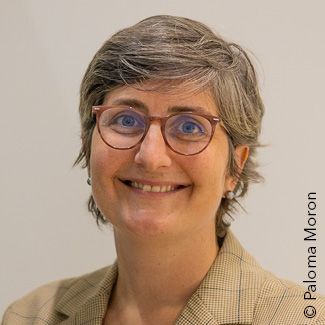
Sustainable space: 3 challenges for cooperation

By Emmanuelle David, Executive Director of eSpace, EPFL Space Centre, Federal Technology Institute of Lausanne (EPFL), Switzerland
Space sustainability has emerged in recent decades as a global development challenge. It even reached the agenda of the International Telecommunication Union (ITU) during the last World Radiocommunication Conference, WRC-23.
But what does space sustainability mean?
In 2019, after almost 10 years of negotiation, United Nations members reached consensus on a definition that aims at maintaining “the conduct of space activities indefinitely into the future” while emphasizing “equitable access” and “meeting the needs of present generations while preserving the outer-space environment.”
The space sustainability paradox introduced by Wilson and Vasile at the University of Strathclyde (UK) extends this definition with three pillars:
- Sustainability from space – using space to address global problems.
- Sustainability in space – viewing space as a natural resource.
- Sustainability for space – protecting our terrestrial environment from the impacts of space activities.
This three-pillar approach, addressed in ITU’s Space Sustainability Forum 2024 report, aligns with the organization’s broader mission to maintain interference-free radio spectrum, enable global communications, and help connect everyone worldwide sustainably.
With the newly created African Space Agency also expressing ambitions in the sector, the question becomes urgent: how can ITU develop smart and fair regulation, backed by scientific research, to ensure equitable access for growing numbers of entrants to space?
Three challenges stand out for international cooperation on space issues: managing inflated fillings for low Earth orbit (LEO) satellite missions; policy coordination across different domains; and balancing “soft” and “hard” legal mechanisms to keep space use sustainable.
Challenge 1: Managing inflated LEO filings
A highly inflated number of filings to ITU – implying up to 1.8 million satellites by 2030 – has clouded regulatory decision-making. In fact, many of those filings will never result in actual launches.
The challenge is to determine how ITU can assess, at the filing stage, which of those systems will actually come into use, as well as which filings cover which systems and under which operator.
In addition, the situation challenges the current “first-come, first-served” principle for radio spectrum sharing among satellite Internet providers.
When only a small number of LEO constellation operators dominate the sector and use all available resources, this principle complicates the available coordination options.
Incumbent operators may hesitate to share of spectrum and orbits with other operators that submit projects at a later stage. But this creates an imbalance among countries and can deter new entrants.
For latecomers to the space domain, one possible model could be shared constellation infrastructure to reduce costs and gain independence.
The challenge of accommodating everyone’s space ambitions was investigated in recent EPFL-ITU research funded by the Geneva Science-Policy Interface.
Challenge 2: Coordinating space policies across different domains
Radio-frequency spectrum allocations must also align, when applicable, with other policy considerations related to space sustainability, such as space traffic management and orbital carrying capacity. While spectrum usage is “unseen”, the reality of radio interference still depends on how the whole space environment evolves.
Orbital congestion in LEO creates new interfacing challenges between different policy domains that largely used to function separately, because satellite activity was previously concentrated mainly on the geostationary orbit nearly 38,000 kilometres above Earth’s surface.
Coordination also tended to happen separately at different levels: national, regional and international.
Policy cohesion is central to the EU Space Act – the European Union’s proposed regulatory framework to regulate the safety, resilience, and sustainability of space activities – and as more countries adopt national space laws.
Challenge 3: Balancing hard and soft legal mechanisms
ITU regulations are a hard law mechanism in the form of treaties applied by all 194 ITU Member States. Accordingly, they take time to complete properly, balancing the need for innovation with the need for protection.
However, the rapid pace of space development requires more agile approaches, particularly to uphold the principles of sustainable and equitable access.
The challenge is adopting complementary soft law mechanisms – such as ratings, labels, or services to share space data – that would incentivize all space missions to behave more responsibly on a voluntary basis.
Such mechanisms can ensure more agile development and greater acceptance by industry players while maintaining regulatory stability and the traditional pace of hard law development.
A unified way forward
The solution requires both traditional “hard law” regulations and innovative “soft law” mechanisms.
Complementary approaches to “hard law”– like sustainability ratings, data-sharing services, and industry labels – could incentivize responsible behaviour more quickly.
ITU offers the ideal platform for implementing these approaches. Its unique position connecting operators, national administrations, and academia makes it the natural forum for bridging this regulatory gap.
Furthermore, in fulfilling its spectrum and orbital resources coordination role, ITU consciously aligns with broader UN guidelines Guidelines for the Long-term Sustainability of Outer Space Activities, as well as the common agenda on future space governance for all humanity.
These are all key topics for ITU’s Space Sustainability Forum.
The stakes are clear: Either the international community continues to collaborate actively, using the ITU forum, to ensure equitable, sustainable space development and use of spectrum/orbit resources, or we risk creating a space environment that serves only a few major players on LEO while leaving developing countries behind.
The choice – and our window for action – is shrinking fast.
Find out more about the Space Sustainability Forum.
Register to follow the sessions
Header image credit: Adobe Stock
